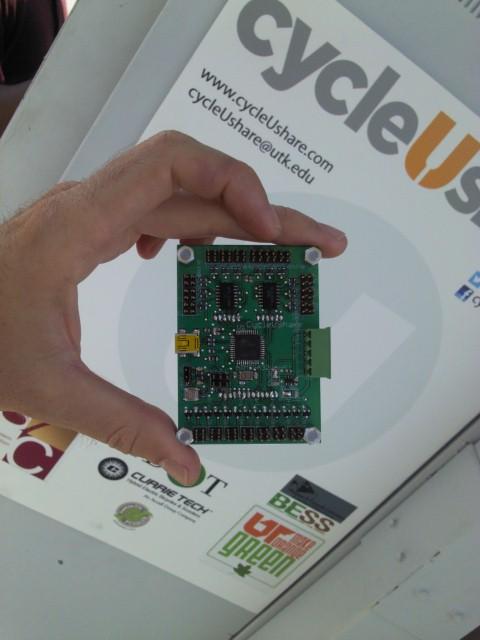KNOXVILLE—Electric cars have been heralded as environmentally friendly, but findings from University of Tennessee, Knoxville, researchers show that electric cars in China have an overall impact on pollution that could be more harmful to health than gasoline vehicles.
Chris Cherry, assistant professor in civil and environmental engineering, and graduate student Shuguang Ji, analyzed the emissions and environmental health impacts of five vehicle technologies in 34 major Chinese cities, focusing on dangerous fine particles. What Cherry and his team found defies conventional logic: electric cars cause much more overall harmful particulate matter pollution than gasoline cars.
“An implicit assumption has been that air quality and health impacts are lower for electric vehicles than for conventional vehicles,” Cherry said. “Our findings challenge that by comparing what is emitted by vehicle use to what people are actually exposed to. Prior studies have only examined environmental impacts by comparing emission factors or greenhouse gas emissions.”
Particulate matter includes acids, organic chemicals, metals, and soil or dust particles. It is also generated through the combustion of fossil fuels.
For electric vehicles, combustion emissions occur where electricity is generated rather than where the vehicle is used. In China, 85 percent of electricity production is from fossil fuels, about 90 percent of that is from coal.
The authors discovered that the power generated in China to operate electric vehicles emit fine particles at a much higher rate than gasoline vehicles. However, because the emissions related to the electric vehicles often come from power plants located away from population centers, people breathe in the emissions a lower rate than they do emissions from conventional vehicles.
Still, the rate isn’t low enough to level the playing field between the vehicles. In terms of air pollution impacts, electric cars are more harmful to public health per kilometer traveled in China than conventional vehicles.
“The study emphasizes that electric vehicles are attractive if they are powered by a clean energy source,” Cherry said.”In China and elsewhere, it is important to focus on deploying electric vehicles in cities with cleaner electricity generation and focusing on improving emissions controls in higher polluting power sectors.”
The researchers estimated health impacts in China using overall emission data and emission rates from literature for five vehicle types—gasoline and diesel cars, diesel buses, e-bikes and e-cars—and then calculated the proportion of emissions inhaled by the population.
E-cars’ impact was lower than diesel cars but equal to diesel buses. E-bikes yielded the lowest environmental health impacts per passenger per kilometer.
“Our calculations show that an increase in electric bike usage improves air quality and environmental health by displacing the use of other more polluting modes of transportation,” Cherry said. “E-bikes, which are battery-powered, continue to be an environmentally friendly and efficient mode of transportation.”
The findings also highlight the importance of considering exposures and the proximity of emissions to people when evaluating environmental health impacts for electric vehicles. They also illuminate the distributional impact of moving pollution out of cities. For electric vehicles, about half of the urban emissions are inhaled by rural populations, who generally have lower incomes.
The findings are published in the journal “Environmental Science and Technology”
here.
Cherry worked with Matthew Bechle and Julian Marshall from the University of Minnesota and Ye Wu from Tsinghua University in Beijing. The scientists conducted their study in China because of the popularity of e-bikes and e-cars and the country’s rapid growth. Electric vehicles in China outnumber conventional vehicles 2:1. E-bikes in China are the single largest adoption of alternative fuel vehicles in history, with over 100 million vehicles purchased in the past decade, more than all other countries combined.
This study is funded by the National Science Foundation’s Faculty Early Career Development (CAREER) award.
The prestigious CAREER award supports junior faculty who exemplify the role of teacher-scholars through outstanding research, excellent education, and the integration of education and research within the context of the mission of their organizations. Cherry received his award in 2011. For more information, click
here.




